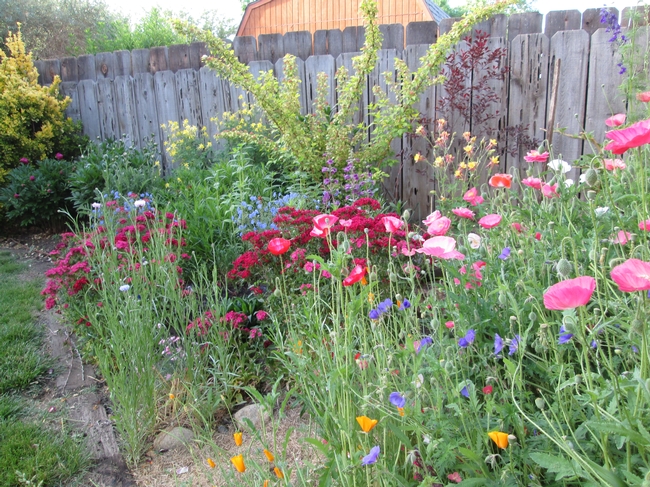As those faithful harbingers of spring, the daffodils, hyacinths and tulips fade it is time to get deadheading. This is done in order to prevent the plant from wasting its energies producing seeds and to divert the food that the leaves continue to produce towards the bulb so as to enlarge and strengthen it for next year's flowers.
The spent flowers should be cut off just below the swelling seed pod as soon as possible after the flowers fade. Tulips and daffodils are obligingly easy since the flower heads snaps off quite readily. It is a rather tedious business but I discovered that it was a job that my small children seemed to enjoy doing (for pay) once they were old enough to do it safely, and this gave them an appreciation of how plants grow and engendered a certain amount of competition so the job got done very quickly!
Bulbs will not produce a second flush of bloom, but other plants that come later - annuals and perennials -will often rebloom more than once in a season if they are prevented from producing seed. After all, from nature's point of view flowers are produced purely for the purposes of reproduction of the species, so if seeds are not allowed to form the plant will continue to keep trying.
To know exactly where to cut off the dead flowers can be a bit of a challenge until one has some experience of different species:
- Petunias, pansies, California poppies etc – dead flowers are pinched off just below the flower head.
- Roses: Prune back to a five-leaflet leaf, making a slanting cut as you would for winter pruning. Carpet roses can be lightly sheared, cutting just below the spent clusters.
- Perennials e.g. dahlias, asters, delphiniums, dianthus. If the flower stem also has leaves or obvious buds, cut back to just above those since that is where further growth will start from. With these plants if just the flower head is removed it leaves an unsightly spiky stem, but by taking the stem down to the first set of leaves it looks more natural.
- Plants with flowers held on naked stems, such as daylilies are cut back to the base.
- Lilacs, viburnums and hydrangeas: These need to be cut just below the flower head, and should be done as soon as the flowers fade since the plant will rapidly be preparing the buds for next year.
Remember to take a container around with you to receive the dead flowers – there is not much point in cutting these off and then leaving them around on the ground where they could harbor disease!
Nothing detracts from the overall appearance of a flower bed more than dead or dying flowers. Often one is tempted to leave a cluster if there is just one floret with some color remaining, but it is much better to cut off that inflorescence and get a replacement growing.
